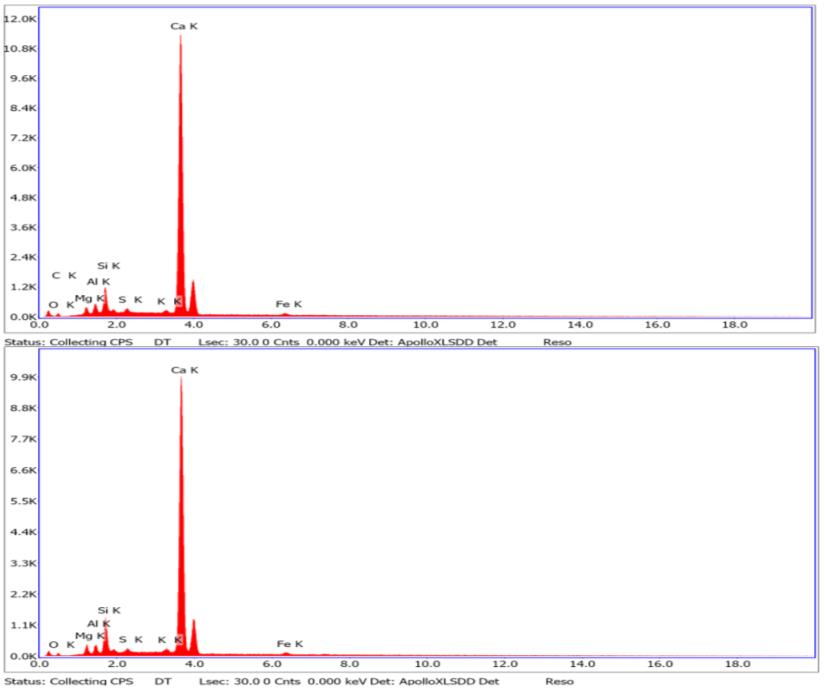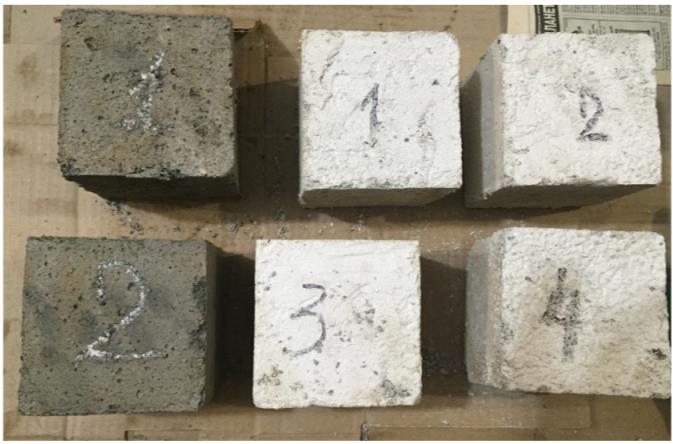Abstract
The Constitution of the Russian Federation stipulates the duties of everyone to preserve cultural heritage objects and the rights of peoples and other ethnic communities to preserve and develop their cultural and national identity, protect, restore and preserve the historical and cultural habitat and sources of information about the origin and development of culture. Issues related to the repair and restoration of cultural heritage objects are always relevant, since historical and cultural monuments have not only historical and cultural significance, but are also an important factor in the socio-economic development of the country. The paper presents the results of a study of the properties of repair compounds, confirming the effectiveness of their use in the restoration and reconstruction of historical and cultural monuments of the tower type. During the experimental selection of repair and restoration compositions, methods of destructive and non-destructive quality control of building materials were used, as well as electron microscopy was used, which allowed us to study the structure of composite materials.
Keywords: Cultural heritage objects, policies, preservation, restroration
Introduction
The Russian Federation is rich in historical and cultural monuments. A significant number of them are located in the South of Russia. Thousands of diverse monuments of history, archeology and architecture are concentrated on the territory of the North Caucasus alone. These are monumental, residential and defensive structures, cyclopean buildings, residential semi-combat and combat towers, castle complexes, burial crypts, solar tombs, ancient pagan sanctuaries and Christian temples.
Problem Statement
In the North Caucasus Federal District (NCFD), there are more than 300 objects of cultural heritage of federal significance and more than 4000 objects with signs of cultural heritage. However, there are many unaccounted-for cultural heritage objects in this territory. Only in the mountainous part of the Chechen Republic and the Republic of Ingushetia there are 239 combat, 67 semi-combat, 1101 residential towers with outbuildings, 141 cyclopean buildings, 23 rock shelters, 28 separate barrier walls, 1280 crypts, 175 sanctuaries and temples.
Research Questions
Archival and bibliographic studies (Goldstein, 1975; Mazaeva, 2014) have shown that in the North Caucasus, towers and tower complexes were built everywhere on lime binder.
Purpose of the Study
From the outer and inner sides of the tower walls, in some cases, were covered with a layer of yellow or yellow-white plaster also based on lime binder. It was a characteristic detail of all architectural monuments of the South of Russia: combat and residential towers, crypts, sanctuaries, etc.
Research Methods
To conduct laboratory tests in order to determine the physical and physico-mechanical parameters, samples of the masonry mortar of the walls of tower buildings were selected. Laboratory tests carried out in accordance with the general construction methodology have established that the following components are present in certain proportions in the masonry mortar of towers and tower structures: dolomite sand, slate chips, cemyanka, slaked lime, casein, ash, etc. The physico-mechanical characteristics of the selected solution samples are presented in table 01.
Findings
The morphology of the structure of the selected samples was studied from images obtained using the electron microscope SEM Quanta 3D 200i (USA) (Figure 01). X-ray phase studies of mortar samples of masonry walls of towers and tower complexes were carried out on a Shimadzu XRD-6000 diffractometer. Sciagraphs of the selected samples of the solution are presented in Figure 02.
Lime solutions and mixtures, polymer cement solutions, polymer solutions, polymer silicate solutions, concretes and others have received the greatest use for the repair and restoration of historical and cultural monuments (Aizenberg et al., 2009; Bazhenov et al., 2006; Bazhenov et al., 2008). Hydrate and hydraulic lime, magnesia binders and Portland cement of the M 400 and M 500 grades are currently used in practice as binders for obtaining repair solutions and concretes, which contradicts the requirements for repair and restoration compositions (Demyanova & Kalashnikov, 2001).
Modern developments include polymer composites based on epoxidized divinyl-piperylene copolymer for the repair of special coatings, decorative sulfur concrete for restoration and repair and construction works, and liquid glass compositions for gluing products from a particularly light composite. (Bataev, 2001).


Due to the low durability, modern repair compounds cannot be used for sealing and healing deep cracks during repair and restoration work (Bataev et al., 2008; Rybyev et al., 2006; Silaenkov, 1987). In this regard, in the Complex Research Institute named after Ibragimov of the Russian Academy of Sciences, repair and restoration compositions are being developed, which, according to preliminary data, have high durability and are approximating to the originals as much as possible.
In the ongoing studies, the use of white cement in repair compositions is provided to replenish the functions of hydraulic lime. Preliminary study results have shown that this binder accelerates the setting and hardening processes, increases resistance to environmental changes and enhances the strength characteristics of the material. The volumetric weight of the materials used is presented in Table 02.
In laboratory conditions, cubes of 70.7x70.7x70.7 cm were made in standard forms to determine the compressive strength (Figure 03). Experimental compositions of mortar for masonry walls of ancient tower buildings were also developed (Table 03).

The samples were tested on a hydraulic press PRG-50. The values of the compressive strength when testing samples at the age of 28 days are presented in Table 04.
Conclusion
As a result of the performed physical and mechanical tests, it was found that the compressive strength of the repair composition samples at the age of 28 days corresponds to the M50 and M75 brands. Accordingly, the proposed repair compositions meet the requirements and can be used for repair and restoration needs in the production of repair, restoration and restoration work on cultural heritage objects. It should also be noted that the developed repair and restoration compositions are as close as possible to the originals, are more effective and contribute to improving the quality and durability of materials.
References
Aizenberg, Ya. M., Majiev, H. N., Bataev, D. K-S., Batdalov, M. M., & Murtazaev, S. A. Yu. (2009). Materials and structures for improving the seismic resistance of buildings and structures. Komtech-Print.
Bataev, D. K., Majiev, H. N., Khubaev, S. M. K., Murtazaev, S. A. Yu., & Shamilev, A. G. (2008). Technical inspection and examination of buildings and structures. Komtech-Print.
Bataev, D. K.-S. (2001). Materials and technologies of repair and restoration work in the construction. [Doct. Dissertation]. Moscow State University of Civil Engineering.
Bazhenov, Yu. M., Bataev, D. K-S., & Murtazaev, S. A. Yu. (2006). Energy- and resource-saving materials and technologies for the repair and restoration of buildings and structures. Komtech-Print.
Bazhenov, Yu.M., Alimov, L.A. and Voronin, V.V. (2008). Technology of concrete, building products and structures. ASV Publishing House.
Demyanova, V. S., & Kalashnikov, V. I. (2001). Effective dry building mixes based on local materials. ASV Publishing House.
Goldstein, A. F. (1975). Medieval Architecture of Chechen-Ingushetia and North Ossetia. Science.
Mazaeva, T. A. (2014). Stone towers of Chechnya. On the issue of interpretation of architectural form. Proceedings of the International scientific and historical conference named after academic L. Blumentrost (pp. 57–82). Wissenschaftliche Welt.
Rybyev, I. A., Kazennova, E. P., & Kuznetsova L. G. (2006). Materials science in construction. Publishing Center “Academy”.
Silaenkov, E. S. (1987). Durability of cellular concrete products. Stroyizdat
Copyright information

This work is licensed under a Creative Commons Attribution-NonCommercial-NoDerivatives 4.0 International License.
About this article
Publication Date
23 December 2022
Article Doi
eBook ISBN
978-1-80296-128-7
Publisher
European Publisher
Volume
129
Print ISBN (optional)
-
Edition Number
1st Edition
Pages
1-1335
Subjects
Science, philosophy, academic community, scientific progress, education, methodology of science, academic communication
Cite this article as:
Sheina, S. G., Bataev, D. K., Goytemirov, R. U., Abdullaev, M. A., & Bataeva, P. D. (2022). Policies And Means For Restroration And Preservation Of Cultural Heritage Objects. In D. K. Bataev, S. A. Gapurov, A. D. Osmaev, V. K. Akaev, L. M. Idigova, M. R. Ovhadov, A. R. Salgiriev, & M. M. Betilmerzaeva (Eds.), Knowledge, Man and Civilization- ISCKMC 2022, vol 129. European Proceedings of Social and Behavioural Sciences (pp. 993-998). European Publisher. https://doi.org/10.15405/epsbs.2022.12.127

